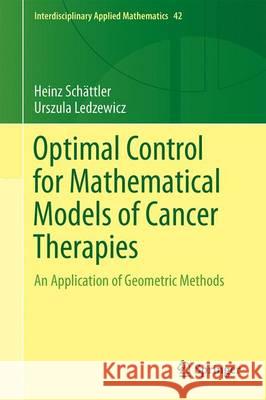Optimal Control for Mathematical Models of Cancer Therapies: An Application of Geometric Methods » książka
topmenu
Optimal Control for Mathematical Models of Cancer Therapies: An Application of Geometric Methods
ISBN-13: 9781493929719 / Angielski / Twarda / 2015 / 496 str.
Optimal Control for Mathematical Models of Cancer Therapies: An Application of Geometric Methods
ISBN-13: 9781493929719 / Angielski / Twarda / 2015 / 496 str.
cena 385,52 zł
(netto: 367,16 VAT: 5%)
Najniższa cena z 30 dni: 382,84 zł
(netto: 367,16 VAT: 5%)
Najniższa cena z 30 dni: 382,84 zł
Termin realizacji zamówienia:
ok. 20 dni roboczych.
ok. 20 dni roboczych.
Darmowa dostawa!
Optimal Control for Mathematical Models of Cancer Therapies











